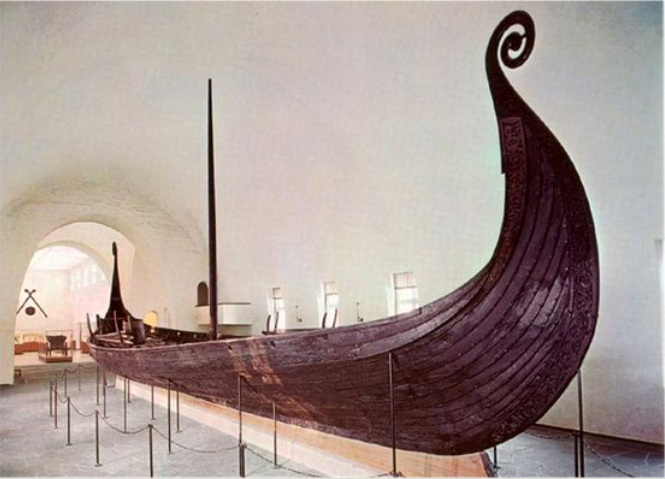
TL;DR:
Between 800 and 1200 AD, the Vikings were converted to Christianity through a combination of royal influence, mass movements, and English missionary efforts. The way it happened was very different from later European colonization efforts, where conquerors imposed their religion on conquered peoples. In this case, the Vikings wound up adopting the faith of those they had once dominated.

The 700s saw the emergence of fierce Viking raiding parties that pillaged and plundered much of Western Europe. Not long after that, Christian missionaries began arriving in Scandinavia. Then, within about 400 years, Christianity had become the dominant religion in Viking lands.
How was this possible? Through what means or patterns of evangelism were people viewed as savage pirates transformed into Christians?
Three key factors shaped the strategy used to evangelize the Vikings. This strategy (or perhaps more correctly, "pattern") is similar in some aspects to what happened in the earlier evangelization of the Germanic peoples. [ read more ]
This third feature of the Viking evangelism pattern is particularly interesting when compared with the later Vasco da Gama period. In that later period, the opposite occurred: dominant colonial powers sent missionaries to subject peoples. During the Western colonial period, the dominant colonial powers sent Christian missionaries to subject peoples. The lack of suspicion that early English missionaries encountered in Viking lands stands in contrast to the political opposition that Western missionaries have often encountered in third- and even second-world countries.
For instance, my own denomination, the Church of the Nazarene, had two American missionaries imprisoned for a time in Mozambique where a Marxist government came to power when that country gained its independence from Portugal. One wonders if these missionaries would have been imprisoned if their sending base had been a country seen as politically less threatening. A study of the evangelization of the Vikings (and of the Germanic peoples, too) should give missionary-sending agencies further encouragement to embrace the trend of developing a strong missionary force from third-world countries.
I think of my denomination, the Church of the Nazarene. About 75 percent of our world membership lives in countries other than the U.S., Canada, and the British Isles. Yet, a large part of our missionary force carries passports from those three countries. Fortunately, there is interest in the top leadership to increase the percentage of Nazarene missionaries from other countries.5 [Note: By 2021, we arrived at the point where Nazarene missionaries were being sent out from about 60 different countries. ]
May the Lord continue to guide us as we learn lessons from the entire history of the expansion of Christianity.
-- Howard Culbertson, hculbert@snu.edu
1 Kenneth Scott Latourette, A History of Christianity, rev. ed. (New York: Harper and Row, 1975), p. 386.
2 Ibid.
3 William Richey Hogg, "The Rise of Protestant Missionary Concerns,"The Theology of the Christian Mission, Gerald H. Anderson, ed. (New York: McGraw-Hill, 1961), p. 97.
4 Latourette, op. cit.
5 Jerald Johnson, "Report of Department of World Missions" in Journal of the Nineteenth General Assembly of the Church of the Nazarene (Meeting held in Dallas, Texas, June 20-25, 1976, no publisher given, p.474.
The Christian evangelization of the Vikings between 800 to 1200 AD was a multifaceted, complex process. It was marked by both coercion and cultural exchange. Initially, Vikings encountered Christianity through raids on monasteries, where they plundered wealth and encountered Christian texts and artifacts. However, as Viking communities settled in areas like England, Ireland, and Francia (an area of modern-day France), they were gradually exposed to Christian teachings through interactions with local populations and through the efforts of missionaries sent by rulers like Charlemagne and Alfred the Great.
These missionaries often faced daunting challenges. The Vikings tried to adhere to their pagan beliefs and practices. Nonetheless, by the 11th century, conversion efforts gained traction. That was made possible by alliances between Viking leaders and Christian rulers, such as the conversion of the Danish king Harald Bluetooth. The establishment of Christian kingdoms in Scandinavia, like Norway under Olaf Tryggvason and Olaf II, signaled a redefining shift towards Christianity among the Vikings. The conversion of Viking leaders and the integration of Christian elements into Viking culture opened the door for a gradual acceptance of Christianity among the broader Viking populace. That led to the Christianization of Scandinavia by the end of the 12th century.